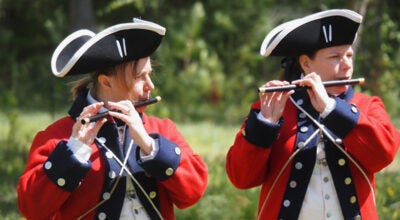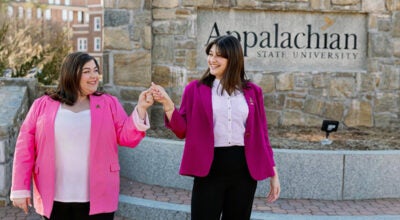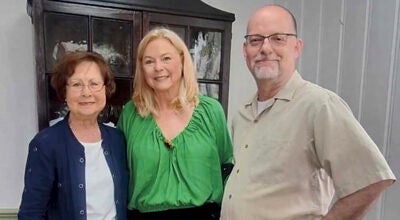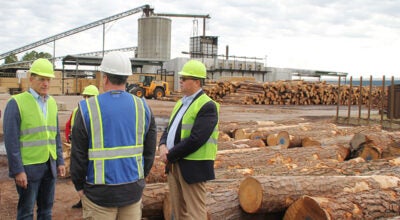Welcome home – finally!
Published 8:29 am Tuesday, July 9, 2013
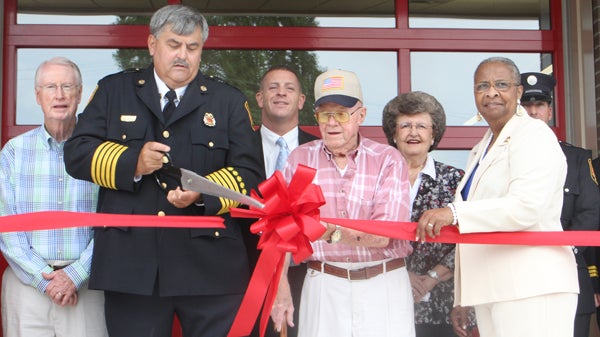
Ahoskie Fire Chief Ken Dilday cuts the ribbon to formally open the town’s new fire station located on Dr. Martin Luther King Jr. Drive. Joining in on the Monday morning ceremony were, from left, Ahoskie Councilman Malcolm Copeland, Mayor Brien Lassiter, retired firefighter Bryant Norville, Councilwoman Elaine Myers and NC House Representative Annie Mobley. Staff Photo by Cal Bryant
AHOSKIE – Bryant Norville recalled that in 1963 there was serious discussion in the town of Ahoskie concerning an effort to build a new fire station.
Fifty years later, Norville smiled as he watched a hundred or so guests file through the new facility.
The skies were gray and damp on Monday morning, but Norville, joined by a small army of firefighters, beamed with pride over the fact that the town committed the funds to finally construct a new station, one located on Dr. Martin Luther King Jr. Drive.
“At least the good Lord let me live long enough to see it built,” said Norville as he stood alongside the department’s fully restored 1928 Ford Model A fire truck on display in the lobby.
Norville retired years ago as a firefighter, but is a regular visitor to the new fire station.
“It’s my home away from home,” he chuckled.
Monday’s event served as the official grand opening and ribbon cutting to formally christen the new building. It attracted numerous local and state dignitaries, including USDA Rural Development State Director Randall Gore.
“Rural Development is committed to the welfare of rural communities in financing essential public structures and providing necessary resources for our first responders. Fire fighters risk their lives to protect property and citizens and we must assist them by providing the best facilities possible. We are indebted to all firefighters as they risk their lives every day for the well-being of others,” said Gore.
He added that he did not want to see investments such as the new Ahoskie Fire Department impacted by the ongoing federal sequestration.
“The need is great to provide dollars for fire, police and rescue protection for our rural citizens,” Gore remarked. “We take a lot of pride in what we do. I grew up in rural eastern North Carolina and I believe with all my heart that we need all the things you can find in Charlotte, Greensboro and Raleigh.”
Ahoskie Fire Chief Ken Dilday presided over the ceremony. Like Norville, Dilday, who joined the department in 1975 and became Chief 12 years later, has been patiently waiting for a new facility to replace a smaller building on McGlohon Street. The vehicle bays of the former location were so small that the town had to specially order trucks to fit those narrow spaces.
“We’re just happy to be here…it’s been a long time coming,” Dilday said. “This fire department is not about me, it’s about these men you see dressed today in their Class A uniform who go about the daily duties of serving the citizens of this town, answering the call when they are needed.”
Ironically near the close of the ceremony, those firemen rushed from the building to answer a “10-78” (fire alarm) at a residence in town.
Dilday recalled the ground-breaking ceremony for the facility held on Aug. 14 of last year. Construction was already underway at that time. Final inspection of the new facility was performed on May 9. Sixteen days later, members of the Ahoskie Fire Department formally closed the old building and paraded the trucks to their new home.
“This was a long wait, but a great one now that you look around and see the building we’re in today,” Dilday said.
Dilday added that although the building has “fire station written all over it,” it was much more. The new facility is also the home of the town’s Building Inspection and Zoning Officer as well as the new meeting place of the Ahoskie Town Council.
“It serves as a multi-functional building,” he said.
Betty Jo Shepheard, representing US Senator Richard Burr, said her boss was pleased to see money coming through the federal system to the rural areas.
“He knows how important this is; the safety of our citizens comes first,” she said. “Senator Burr feels like the fire departments, police departments and rescue personnel put their lives on the line every day and should be rewarded with the best facilities and the best tools to work with. Senator Burr knows of the impact USDA has on our rural communities and praises their efforts. Thanks to Mr. Gore and his staff for all they do. This is a big day for rural North Carolina and the town of Ahoskie.”
The new building also benefits the Ahoskie Fire Department’s loyal and hard-working volunteers.
“We’re very happy to have this new building,” said Joey Bolam, president of the Ahoskie Volunteer Firefighters Association. “This is a beautiful building, brought about by so many people, including our volunteers.”
North Carolina State Firemen’s Association Executive Secretary Paul Miller praised the efforts of the USDA and Senator Burr’s office to move the Ahoskie project along.
“I don’t know in what shape our rural towns would be if were not for USDA,” he stressed. “Our rural towns are in great need of improving their aging infrastructure. That investment is needed to attract new business and industry; that money, those resources, are very limited in small towns.”
Miller is also an eastern North Carolina native and proud of all those who have stayed at home to make a difference in their local communities.
“This is a beautiful facility for several reasons,” Miller noted. “Number one, you have an outstanding chief in Ken Dilday; he once led the 47,000 members as president of the State Firemen’s Association. “But he can’t lead alone as he needs every one of these men standing in the back today, whether they are firemen, police, EMS or whatever. They have to support him.
“To the Town Council of Ahoskie, I thank you for your courage to invest in a building of this type, especially in this tough economy,” Miller continued. “You did it because you are leaders with vision. I hope you all will thoroughly enjoy this new building.”
Ahoskie Mayor Brien Lassiter and Council members Elaine Myers, Malcolm Copeland and Linda Blackburn along with Town Manager Tony Hammond were also in attendance, as were representatives of Oakley-Collier Architects, who designed the building.
Lassiter, a former fireman, said he recalled the cramped quarters of the old fire station.
“This new facility is beautiful, but the key is it serves as a multi-function building,” Lassiter said. “I know that Chief Dilday is happy that he will not have to special order any more trucks to fit in what was a very small building downtown. I like to thank all those who had a hand in getting us to this special day in Ahoskie’s proud history.”
“We are so appreciative of all the support we received in this project, one that was very much needed,” Blackburn said. “The town’s citizens deserve this, but so do those men standing in uniform at the back of this room. They put their lives on the line. We can all lay our heads down at night and feel safe by knowing that our firemen, police officers and EMS personnel stand ready to answer the call for help.”
Other than its spacious new bays (three doubles; room for six vehicles) for the fire trucks, the new station boasts of plenty of storage space, a radio room, laundry room, kitchen/lounge, food pantry and four bedrooms for the paid staff that work around the clock, 365 days a year.
There’s also office space for Dilday, Assistant Chief Eric Whitmeyer and the secretary/treasurer of the volunteers.
The new and modern facility encompasses nearly 13,000 square feet and was built with a low interest loan of $1,823,000 and $50,000 grant through USDA Rural Development.
The USDA’s Community Facilities program helps finance essential community facilities for public use in rural areas. These include health and child care centers, hospitals, medical clinics, assisted-living facilities, fire and rescue stations, police stations, libraries, community centers, public buildings and transportation. Through this program, USDA ensures that such facilities are available to all rural residents. These funds are available to public bodies, non-profit organizations and federally recognized Indian tribes. More information about USDA Rural Development can be found at www.rurdev.usda.gov.



